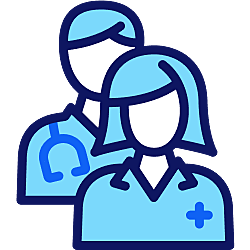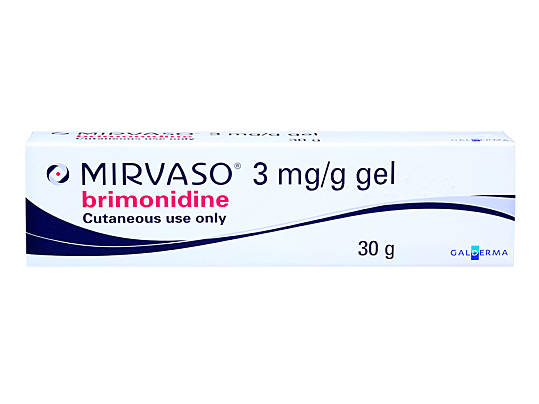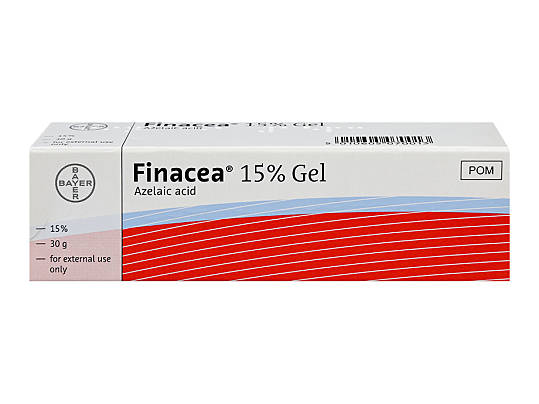Rosacea Treatment
Get your rosacea treatment online with free and fast delivery.
Prices from £20.00
Simply fill in a brief consultation questionnaire and one of our doctors will review your request today.
Rosacea is a skin disorder that can cause uncomfortable and noticeable redness around the face and eyes. It causes blood vessels to show up and can also result in spots and acne. There are a 3 reliable treatments for rosacea that can be applied to the skin using simple rub-in gels.
Please note, when you request a generic (non branded) treatment, the product you receive may look slightly different than what we show on our website. The active ingredient in the medication will be exactly the same though. This is because we use a range of manufacturers to ensure we always have enough stock for patients. If you have any questions, you can message our Customer Support team or doctors through your account.
Rosacea treatments
In stock. Prices from £49.00
In stock. Prices from £22.99
In stock. Prices from £20.00
In stock. Prices from £45.14

No results found.
Please check your spelling or try another treatment name.



Rosacea Treatment
Mirvaso
How it works
Stops redness of the face by reducing the size of blood vessels that sit just under the skin.
Side effects
Possible side effects include worsening symptoms (up to 9%), skin irritation (3%)and itching (2%). Side effects get better with continued use.
Who can use it
May not be suitable if you're allergic to brimonidine tartrate. May react with blood pressure medicines and MAOIs (a type of antidepressants).
Finacea
How it works
Reduces the appearance of rosacea through antioxidant and anti-inflammatory mechanisms.
Side effects
Possible side effects include stinging, tingling. and burning. These should improve after one to two weeks. Using Isotretinoin with Finacea may increase the risk of skin irritation.
Metronidazole gel
How it works
Reduces the appearance of acne by killing bacteria which causes acne.
Side effects
Skin irritation which improves after one to two weeks.
Who can use it
Tell your doctor before using metronidazole if you’re taking other medicines, especially Antabuse and blood thinners.
Soolantra
How it works
Thought to work by reducing inflammation, and by killing demodex mites which live on the skin and may play a part in causing rosacea.
Side effects
Burning or itching sensation of the skin, skin irritation or dry and flaky skin. These side effects will usually improve after 1 to 2 weeks of using the treatment.
-
-
Rosacea is an inflammatory skin condition that affects around 2 to 10% of the population. This condition normally lasts throughout a person’s life and the severity of symptoms vary over time.
There are four different types of rosacea, each with slightly different symptoms to the other. It’s quite common for one person to have two or more types of rosacea at any one time.
The different types of rosacea and some common symptoms associated with them are listed below.
Erythematotelangiectatic rosacea (ETR)
- Flushing
- Constant redness in the centre of the face
- Spider veins (larger veins that appear close to the surface of the skin, giving the impression of a spider web)
Papulopustular (acne) rosacea
- Constant redness in the centre of the face
- Papules (small red bumps on the skin)
- Pustules (small red bumps on the skin that are filled with pus)
Phymatous rosacea
- Thickening of the skin
- Irregular nodules (growths) on the skin
- If left untreated – may result in rhinophyma (a layer of thickened, irregular skin, mostly on the nose)
Ocular rosacea
- Inflammation of different parts of the eyelids
Over time, a person with rosacea may notice that their symptoms vary whilst some may even find that their rosacea changes from one subtype to another.
-
-
Currently, the exact causes of rosacea are poorly understood. The most recent studies have found that a person’s genes, immune system, and workings of the blood vessels affect whether or not they have rosacea. However, how exactly these factors result in a person having rosacea is still unknown.
Rosacea may be made worse by “triggers”, which are different from person to person. Some of the common ones are:
Environment: Hot baths, Saunas, hot weather, cold weather, sunlight, wind.
Chemicals: Skin products, topical steroids, blood pressure medicines, some painkillers (like triptans).
Stress: Vigorous exercise, anxiety, sudden changes in emotions – such as feeling embarrassed.
Diet: Alcohol, spicy food, hot food, drinks.
Medical conditions: Menopause, chronic cough, caffeine withdrawal.
Unfortunately, while exercise is essential to a balanced lifestyle, it tends to make rosacea worse. There are some things that you can do to minimise the effect of exercise on rosacea. For instance, you can split one long workout into a few shorter segments. Furthermore, you can avoid exercising outdoors in hot weather, using a fan when exercising indoors, and putting a cool cloth on your face straight after a workout.
It might be helpful to think that the things that make your face flush often also make your rosacea worse. You can keep a diary to help you figure out which of the common triggers affect your rosacea.
-
-
Because rosacea symptoms can be triggered by certain lifestyle factors or foods, avoiding these triggers can often help you manage your symptoms without needing medical treatment.
Some people use natural treatments to manage their rosacea symptoms, but these are not medically studied treatments and so may not work for everyone. We also do not know if they could make your symptoms worse. You can make your own ointments for your face using the following ingredients:
- Green tea – soaking a cloth in cooled green tea and applying it to your face may help with rosacea symptoms
- Honey – applying honey to your face and letting it sit for 20 to 30 minutes before washing off is said to soothe the skin and help retain moisture
- Aloe vera – applying aloe vera to your skin is said to help with its healing process, reducing irritation
- Cucumbers – placing cucumbers on the red areas of the face can have a cooling effect
There’s a large community online made up of people going through similar experiences. For some, these online communities and forums make up a significant part of living with rosacea as they offer a supportive environment as well as some tips that they have found effective to lessen the symptoms of their own rosacea. Everyone’s condition and symptoms are different, however, so it’s important to remember that what works for one person may not work as effectively for you. Some examples of these rosacea forums are:
-
-
Yes, you can. Many people use foundations, tinted moisturisers, concealers, and green colour correctors to neutralise the redness on their face that is caused by rosacea. Some also combine the use of treatment gels with makeup to reduce the appearance of redness and acne.
It's important to remember, however, that some skin products may increase the irritation on your skin. Before using any new makeup or products, apply a small amount to a patch on your face and let it sit for 48 hours to see if any new redness or irritation occurs.

Dr Kathryn Basford is a qualified GP who works as a GP in London, as well as with ZAVA. She graduated from the University of Manchester and completed her GP training through Whipps Cross Hospital in London.
Meet our doctorsLast reviewed: 13 Jun 2019
-
How and when to take or use metronidazole, National Health Service [accessed February 2023]
-
Rozex® 0.75 % w/w Gel, Patient Information Leaflet, EMC [accessed February 2023]
-
Rosacea, National Health Service [accessed February 2023]
-
An update on the treatment of rosacea, Australian prescriber [accessed February 2023]









